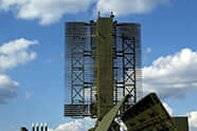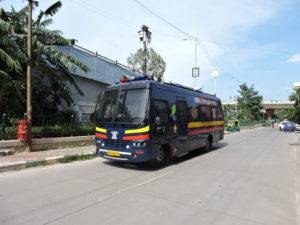Advances in technology are bringing various unique surveillance camera solutions to the forefront,, to better aid users of homeland security applications. This article covers a few of these unique camera solutions:
- 360° Hemispheric Camera
- 360° Panoramic Camera
- Stereo Camera
- Thermal Camera
360° Hemispheric Camera
A 360° hemispheric camera provides total situational awareness. The camera monitors the entire 360° field of view all the time with no blind spots. The camera can easily replace between 4 – 8 cameras as it sees 360° all the time. It consists of a fish-eye (wide-angle) lens that takes in an extremely wide, hemispherical image. More importantly, the advantage is that there’s now only one camera to review after an event or crime has occurred (not eight), and with no blind spots.
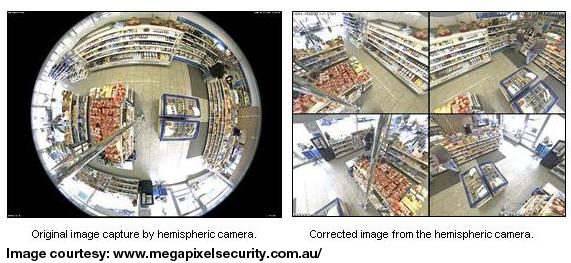
The hemispheric camera is ideal for surveillance of indoor spaces or for applications like UAV reconnaissance.
360° Panoramic Camera
A 360° panoramic camera consists of multiple (4-8) wide angle lens cameras, each providing a wide field of view (ranging from 45° to 90°).Each of the individual cameras provide a seamless mosaic of images stitched into a single, live 180° or 360° panoramic view.
These cameras come with a very high pixel count; enabling users to zoom in for greater detail, without losing clarity. The 360° panoramic camera is ideal for mobile reconnaissance and observing large areas such as government and military installations, public spaces, campuses, utilities and ports.
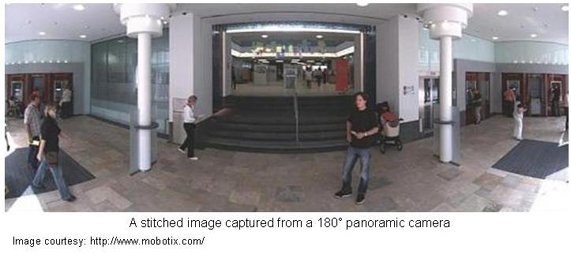
Stereo Camera Stereo cameras consist of two or more lenses with a separate image sensor for each lens. This allows the camera to simulate human binocular vision, and therefore gives it the ability to capture three-dimensional images, to provide range imaging. It helps to produce full-frame dense depth maps at real-time speeds. The stereo cameras consist of software that perform stereo correlation at multiple image resolutions and fuse depth maps across multiple levels, to provide precise results; allowing users to accurately measure the distance to every valid pixel in the image.
The software provided along with stereo cameras also supports various applications like 3D reconstruction, obstacle detection and ground plane estimation.
Applications for stereo cameras include: autonomous robot navigation, operating in poor visibility, situational awareness, battle space visualization, collision alert systems for automobiles and gesture recognition system for gaming and interactive displays.
Thermal Camera
Thermal cameras provide the power to see threats invisible to the naked eye, turning night into day. Thermal cameras make images from the heat energy that is around us all the time, not from reflected visible light, giving users true 24/7 imaging capability without lights or illuminators.
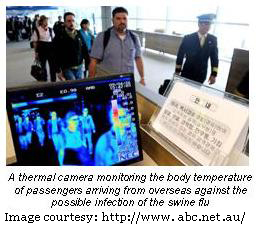
Conventional cameras work in the range of visible light, i.e. with wavelengths between approximately 0.4–0.7 μm. Thermal cameras, on the other hand, are designed to detect radiation in the much broader infrared spectrum, up to around 14 μm (the distances in the spectrum above are not according to scale).
Thermal energy penetrates atmospheric obscurants better and farther than visible light, allowing visibility through haze, smoke, dust and even light fog.
Thermal sensors can also be integrated with any of the cameras listed above providing low-light functionality to these cameras. Applications include: condition monitoring, night vision, security surveillance, law enforcement and defense applications among others. For more information on thermal cameras, please refer the December 2009 Tech. Brief: LOW-LIGHT AND NO-LIGHT SURVEILLANCE – OPTIONS AND CAUTIONS.

